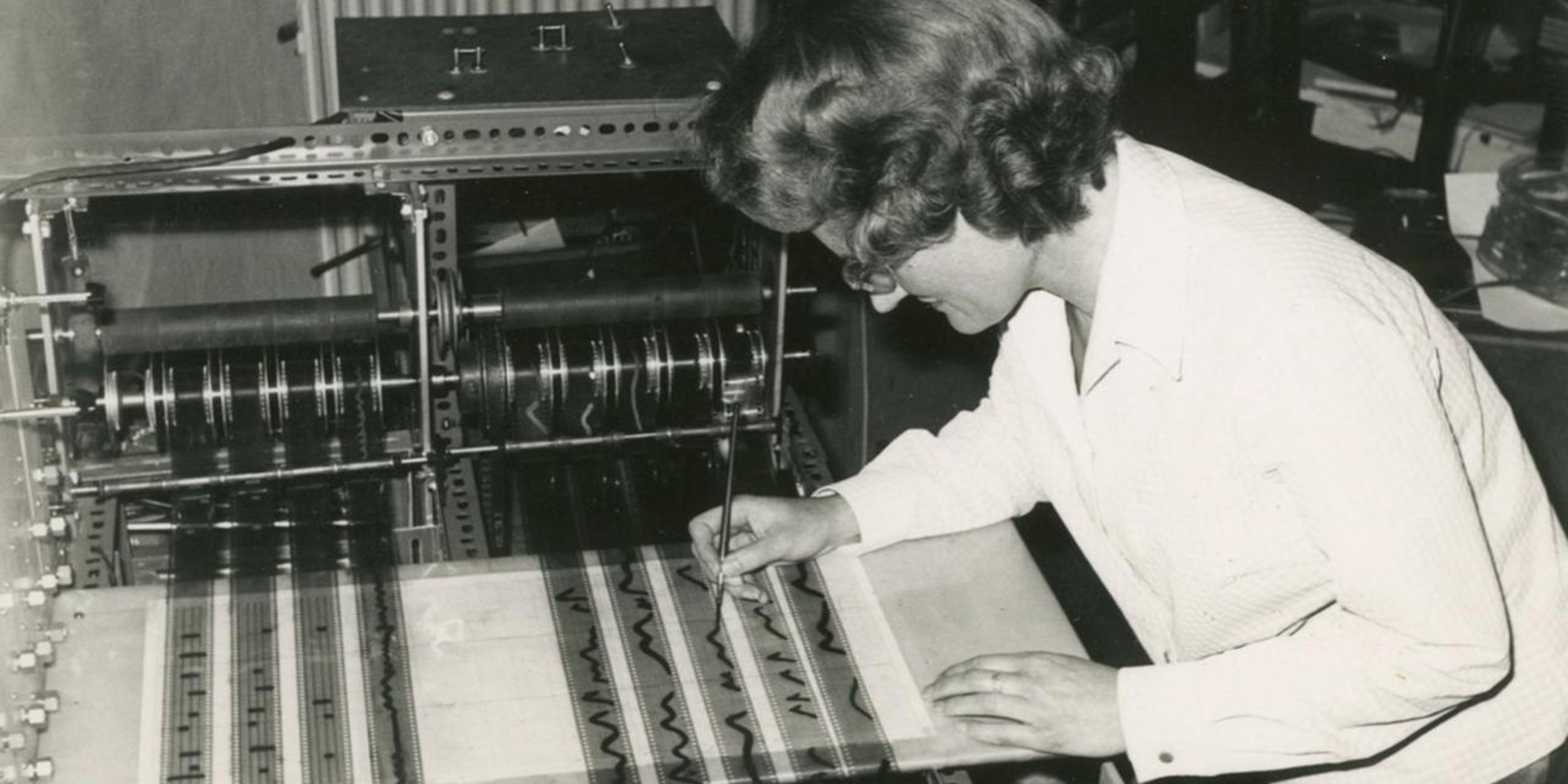radio : Symmetry
BBC Radio presents In Our Time by Melvyn Bragg. This episode : SYMMETRY
continue reading arrow_forward
There’s a theatre play made about Daphne Oram! I’m very curious to see that! It is an hommage to Oram and the BBC wrote an article about it:
The woman that could ‘draw’ music
One of electronica’s pioneers, Daphne Oram helped revolutionise music but remains surprisingly little known. A new play puts her offbeat life, and accomplishments, into the spotlight.
Few people know Daphne Oram, but she helped shape the sounds, and songs, we listen to today. A pioneer of electronic music, she wrote Still Point – thought to be the world’s first composition which manipulates electronic sounds in real time – in 1949. In 1957, she set up the famous BBC Radiophonic Workshop. The same year, she began working on her Oramics machine, which turned graphical gestures into music: the user could ‘draw’ the sounds they wished to hear.
(…) Oram, who died in 2003, has a biography as unexpected as one of her compositions – and not just because she worked in the masculine world of sound engineering.
(…) In the 1960s, though, Oram was taken up with her own invention: the Oramics machine. She had encountered a Cathode Ray Oscilloscope – which shows a visual image of sound waves – during her BBC training. Why not reverse it? If you paint in waves the ‘shape’ of the sound you want to hear on 35mm film, determining the pitch, vibrato, timbre and so on, scanners can read and convert that into layered sound. It was, in essence, an early sequencer – and more advanced than those that initially would become available in the 1980s.
The idea of a ‘graphical music’ system consumed Oram. It typifies her view of electronic music not as a soulless, mechanically-controlled thing, but as organic, human and joyously imperfect as any other music. “It’s quite a democratic view: on something like the Oramics machine, you can just draw,” points out McArthur. “That gestural interface means all people become composers, conceivably, which ties back into her philosophy which says that, at a molecular level, we are sounds. We are all made up noisy atoms and vibrations – sound is at the core of who we are. I find that really inspiring.”
(…)
FULL ARTICLE by Holly Williams